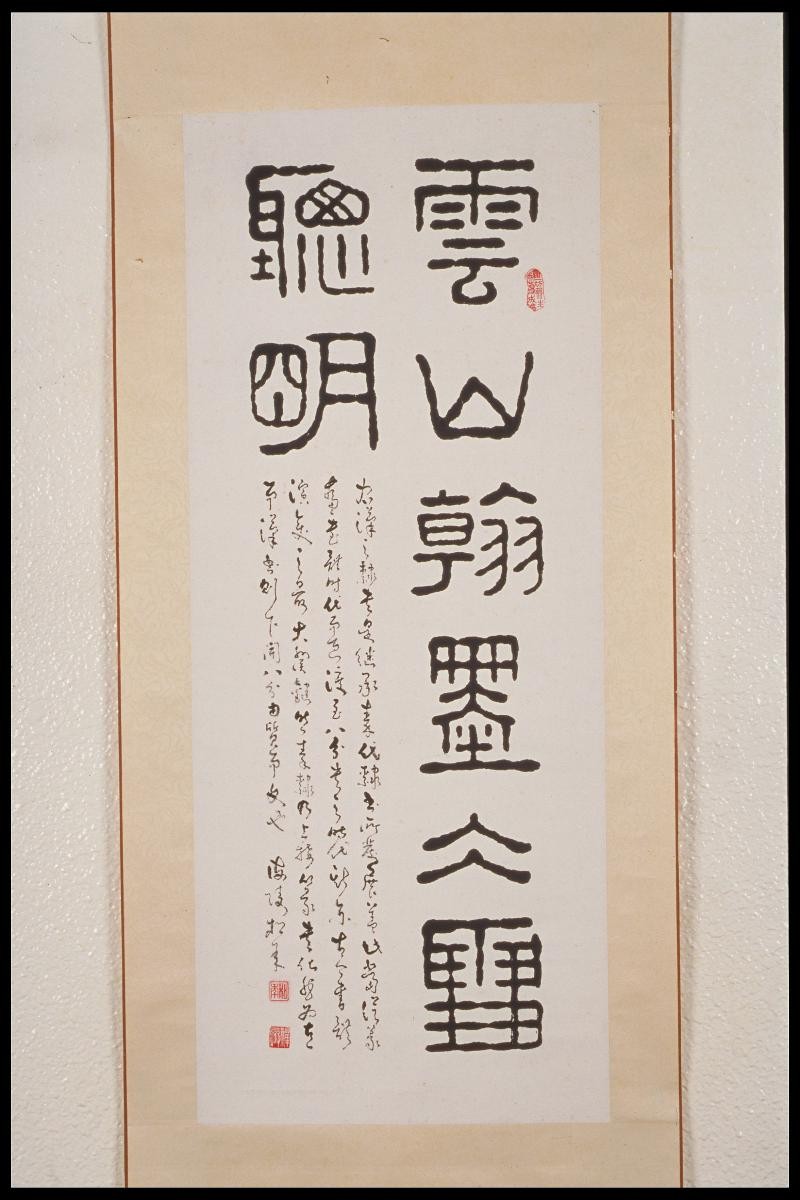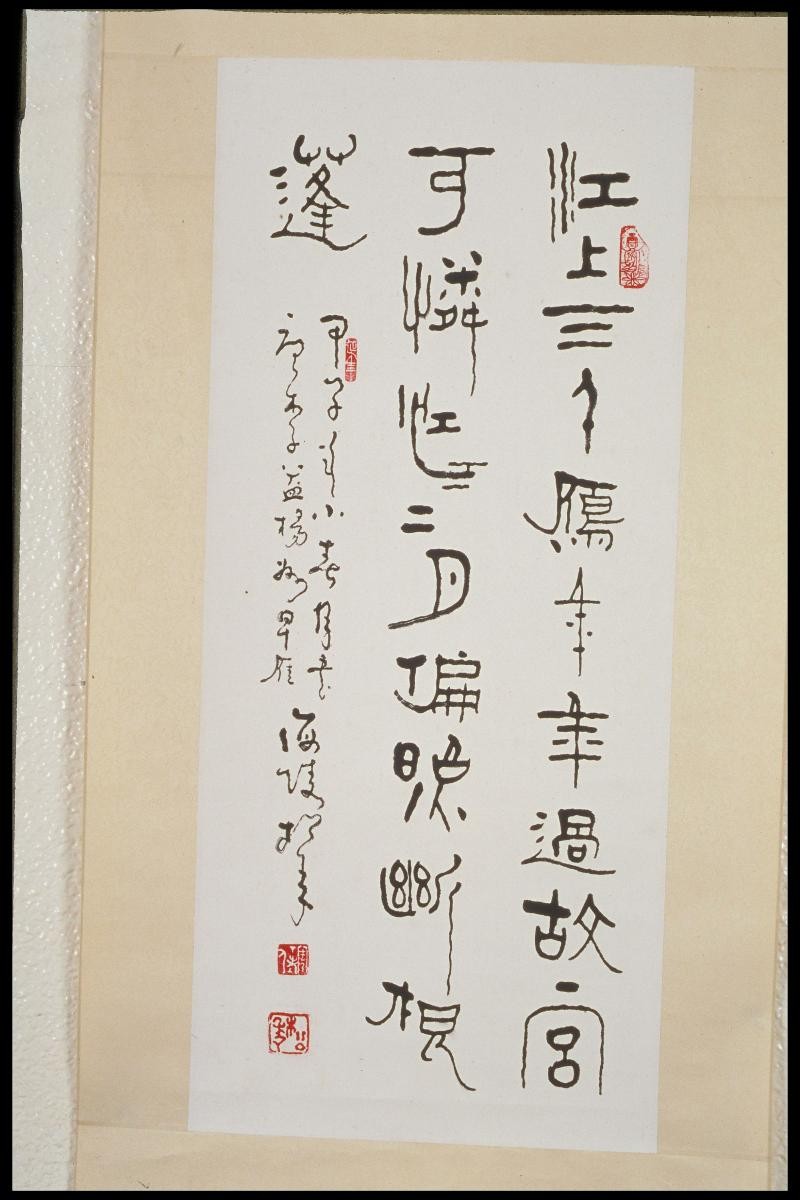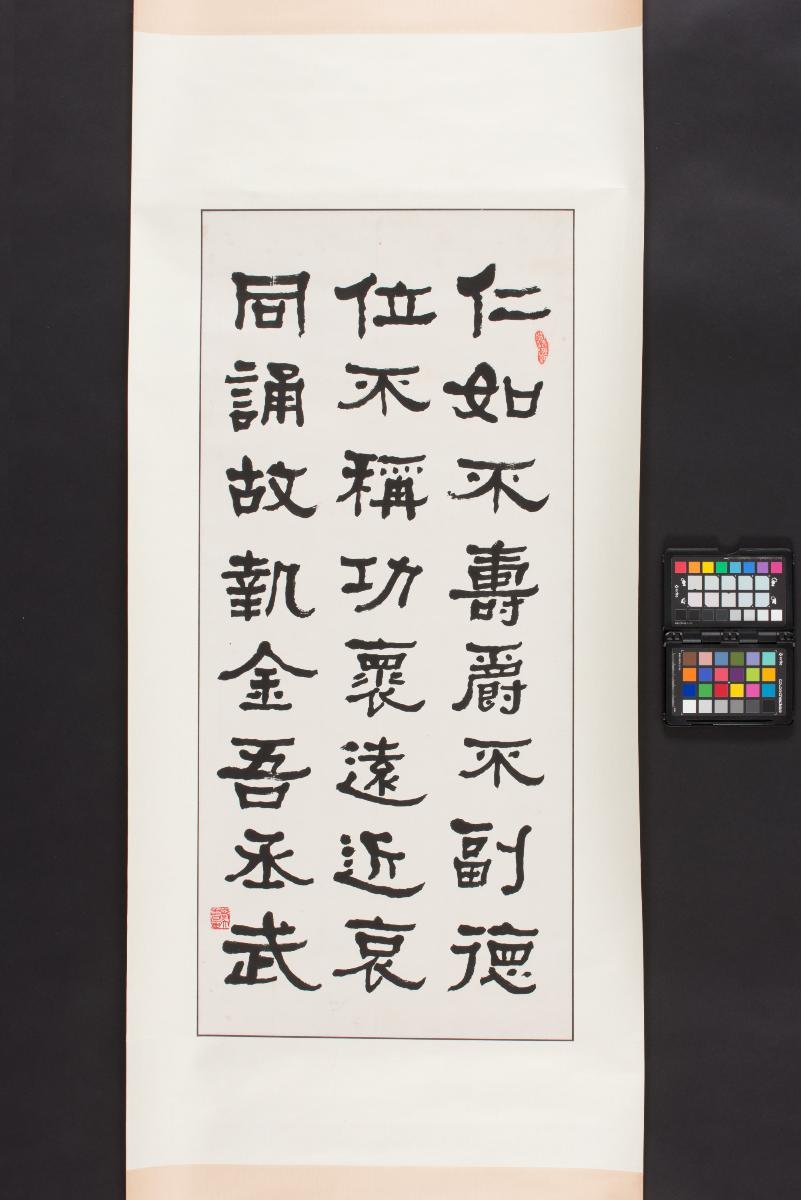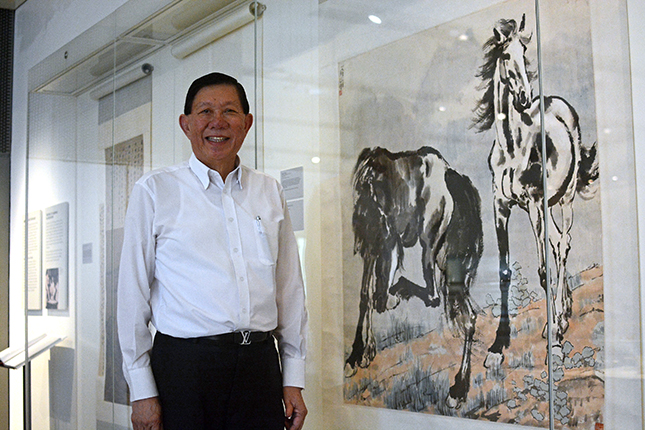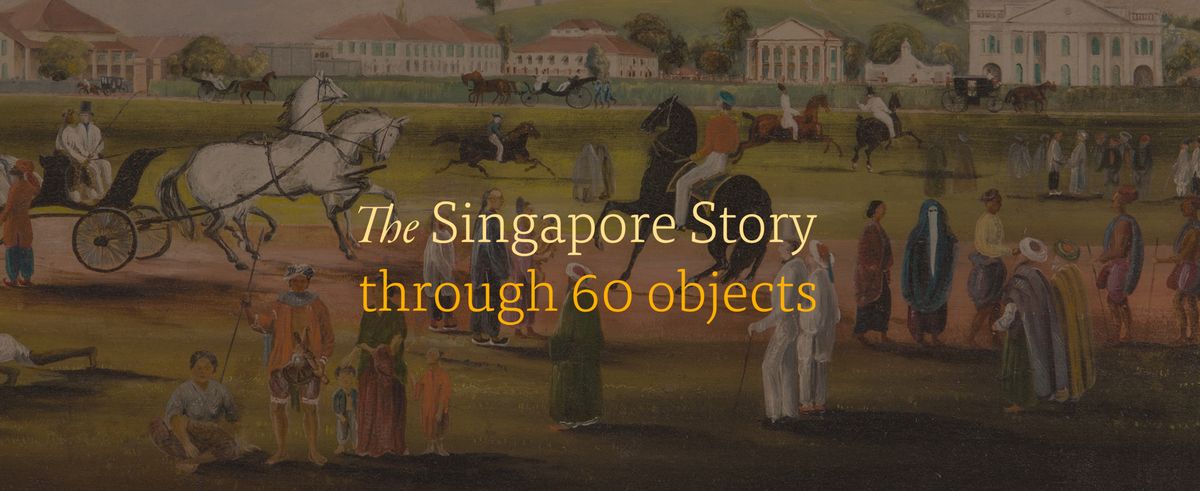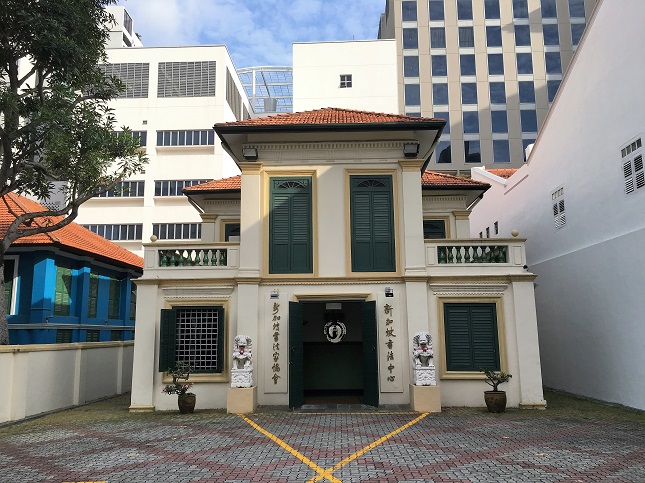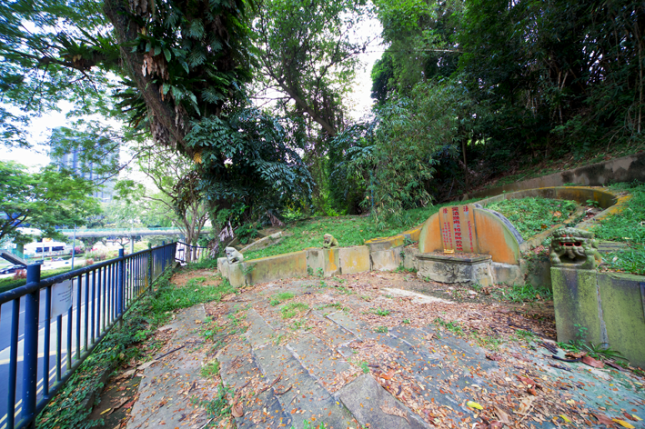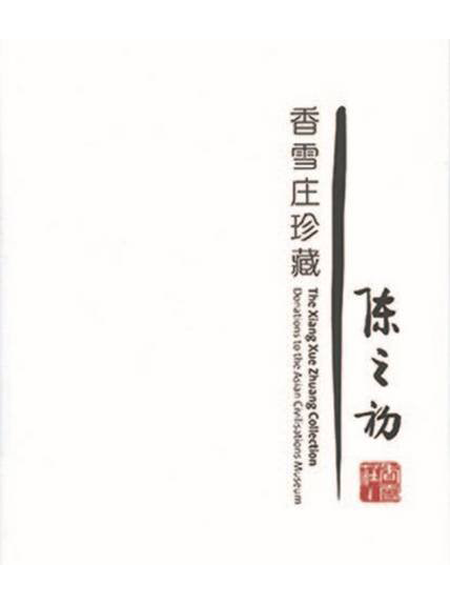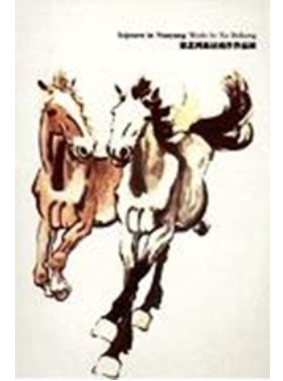Frame size: 172.9 x 46.8 cm (M)
Born in Jiangsu, China, to a family of distinguished scholars, Reverend Song Nian (1911-1997), commoner name Song Tiecheng, studied in a private school and practised calligraphy from the tender age of six. At 16, he entered the monastery and shortly after, enrolled in Tsinghua University in 1928 to study literature. A student of famous Jiangnan scholar Xiao Tiu’an and other teachers, Song Nian consolidated what he had learnt and eventually developed an original script, known as the ‘Song Nian Style’. He emigrated to Singapore in 1961 and was the head of Puti Temple. Well-versed in the traditional Chinese art forms, namely poetry, painting, calligraphy and seal-carving, Song Nian was a renowned figure in Singapore’s art scene. This calligraphy by Song Nian demonstrates and explains the significance of the clerical script. It first appeared during the Warring States period (c. 475-221BCE) but became fully developed only in the late Western Han period (202BCE-9CE). It played the transitional role as the written language evolved from a largely pictogram-based one to the modern day characters.




